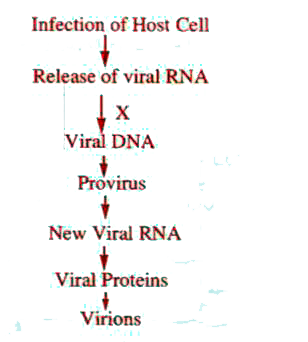Give the schematic representation of glycolysis.
Step-by-Step Solution for the Schematic Representation of Glycolysis:
1. Starting Molecule: The process begins with one molecule of glucose (C6H12O6).
2. Conversion to Glucose-6-Phosphate:
- Enzyme: Hexokinase
- Reaction: Glucose + ATP → Glucose-6-Phosphate + ADP
- Hint: Remember that ATP is consumed in this step.
3. Isomerization to Fructose-6-Phosphate:
- Enzyme: Phosphoglucoisomerase
- Reaction: Glucose-6-Phosphate ↔ Fructose-6-Phosphate
- Hint: This step involves rearranging the structure of the molecule.
4. Phosphorylation to Fructose-1,6-Bisphosphate:
- Enzyme: Phosphofructokinase
- Reaction: Fructose-6-Phosphate + ATP → Fructose-1,6-Bisphosphate + ADP
- Hint: This is a key regulatory step and another ATP is used.
5. Cleavage into Two Triose Phosphates:
- Enzyme: Aldolase
- Reaction: Fructose-1,6-Bisphosphate → Glyceraldehyde-3-Phosphate + Dihydroxyacetone Phosphate
- Hint: This step splits the 6-carbon molecule into two 3-carbon molecules.
6. Isomerization of Dihydroxyacetone Phosphate:
- Enzyme: Triose Phosphate Isomerase
- Reaction: Dihydroxyacetone Phosphate ↔ Glyceraldehyde-3-Phosphate
- Hint: Both products can be converted into Glyceraldehyde-3-Phosphate.
7. Oxidation and Phosphorylation to 1,3-Bisphosphoglycerate:
- Enzyme: Glyceraldehyde-3-Phosphate Dehydrogenase
- Reaction: Glyceraldehyde-3-Phosphate + NAD+ + Pi → 1,3-Bisphosphoglycerate + NADH
- Hint: This step produces NADH, which is important for energy production.
8. Conversion to 3-Phosphoglycerate:
- Enzyme: Phosphoglycerate Kinase
- Reaction: 1,3-Bisphosphoglycerate + ADP → 3-Phosphoglycerate + ATP
- Hint: Here, ATP is generated.
9. Conversion to 2-Phosphoglycerate:
- Enzyme: Phosphoglycerate Mutase
- Reaction: 3-Phosphoglycerate ↔ 2-Phosphoglycerate
- Hint: This step is another isomerization.
10. Dehydration to Phosphoenolpyruvate (PEP):
- Enzyme: Enolase
- Reaction: 2-Phosphoglycerate → Phosphoenolpyruvate + H2O
- Hint: Water is removed in this step.
11. Conversion to Pyruvate:
- Enzyme: Pyruvate Kinase
- Reaction: Phosphoenolpyruvate + ADP → Pyruvate + ATP
- Hint: This is the final step where pyruvate is produced.
Summary of Energy Yield:
- ATP Consumed: 2 ATP (steps 1 and 3)
- ATP Produced: 4 ATP (steps 8 and 11)
- Net Gain: 2 ATP
- NADH Produced: 2 NADH (step 7)
Final Products:
- 2 Pyruvate molecules
- 2 NADH
- Net 2 ATP
- Enzyme: Hexokinase
- Reaction: Glucose + ATP → Glucose-6-Phosphate + ADP
- Hint: Remember that ATP is consumed in this step.
- Enzyme: Phosphoglucoisomerase
- Reaction: Glucose-6-Phosphate ↔ Fructose-6-Phosphate
- Hint: This step involves rearranging the structure of the molecule.
- Enzyme: Phosphofructokinase
- Reaction: Fructose-6-Phosphate + ATP → Fructose-1,6-Bisphosphate + ADP
- Hint: This is a key regulatory step and another ATP is used.
- Enzyme: Aldolase
- Reaction: Fructose-1,6-Bisphosphate → Glyceraldehyde-3-Phosphate + Dihydroxyacetone Phosphate
- Hint: This step splits the 6-carbon molecule into two 3-carbon molecules.
- Enzyme: Triose Phosphate Isomerase
- Reaction: Dihydroxyacetone Phosphate ↔ Glyceraldehyde-3-Phosphate
- Hint: Both products can be converted into Glyceraldehyde-3-Phosphate.
- Enzyme: Glyceraldehyde-3-Phosphate Dehydrogenase
- Reaction: Glyceraldehyde-3-Phosphate + NAD+ + Pi → 1,3-Bisphosphoglycerate + NADH
- Hint: This step produces NADH, which is important for energy production.
- Enzyme: Phosphoglycerate Kinase
- Reaction: 1,3-Bisphosphoglycerate + ADP → 3-Phosphoglycerate + ATP
- Hint: Here, ATP is generated.
- Enzyme: Phosphoglycerate Mutase
- Reaction: 3-Phosphoglycerate ↔ 2-Phosphoglycerate
- Hint: This step is another isomerization.
- Enzyme: Enolase
- Reaction: 2-Phosphoglycerate → Phosphoenolpyruvate + H2O
- Hint: Water is removed in this step.
- Enzyme: Pyruvate Kinase
- Reaction: Phosphoenolpyruvate + ADP → Pyruvate + ATP
- Hint: This is the final step where pyruvate is produced.
- ATP Consumed: 2 ATP (steps 1 and 3)
- ATP Produced: 4 ATP (steps 8 and 11)
- Net Gain: 2 ATP
- NADH Produced: 2 NADH (step 7)
- 2 Pyruvate molecules
- 2 NADH
- Net 2 ATP
Topper's Solved these Questions
- RESPIRATION IN PLANTSBOOK - ICSECHAPTER - RESPIRATION IN PLANTSEXERCISE - NCERT EXERCISES WITH ANSWER (DIFFERENTIATE BETWEEN)
6 Videos
- RESPIRATION IN PLANTSBOOK - ICSECHAPTER - RESPIRATION IN PLANTSEXERCISE - TEST YOUR PROGRESS ( HIGHER ORDER THINKING SKILLS QUESTIONS (HOTS))
7 Videos
- QUESTION PAPER -BIOLOGYBOOK - ICSECHAPTER - QUESTION PAPER -BIOLOGYEXERCISE - PART -II (Section -C)
6 Videos
- SAMPLE QUESTION PAPER 2 BOOK - ICSECHAPTER - SAMPLE QUESTION PAPER 2 EXERCISE - PART-II SECTION - C
6 Videos
Similar Questions
Give a labelled diagram indicating the schematic representation of Krebs cycle.
View Solution
Given above is the schematic representation of lac operon of E.coli. Explain the functioning of this operon when lactose is provided in the growth medium of the bacteria.
View SolutionGive a labelled schematic representation of "lac operon" in its "Switched off" position.
View SolutionGive a schematic repesentation of oogesis in humans . Mention the number of chhromosomes at each stage .Correlate the life phases of the individual with the stage of the process .
View SolutionIdentify 'X' in the schematic representation of HIV replication cycle given below.

View SolutionIn which of the sex determination both male and female same number of chromosomes ?
View Solution(a)Give a schematic representation of spermatogenesis in humans .
(b) At which stage of life does gametogenesis begin in human male and female respectively ?
(c )Name the organs where gametogensis gets completed in male and female respectively.
View SolutionGlycolysis is
View SolutionGlycolysis is
View SolutionGlycolysis is
View Solution
